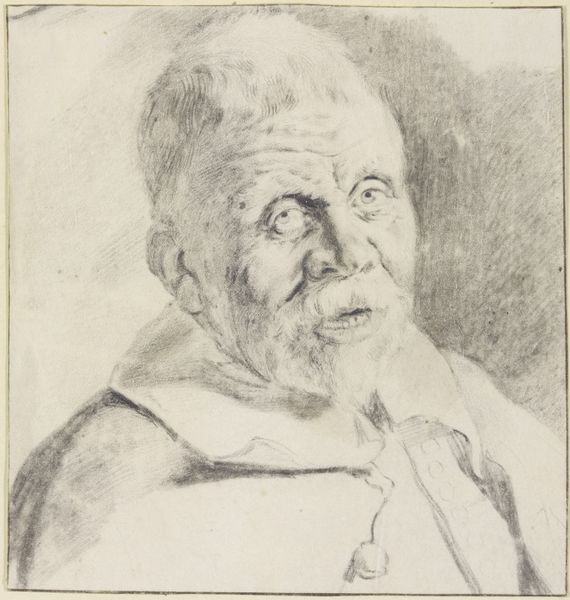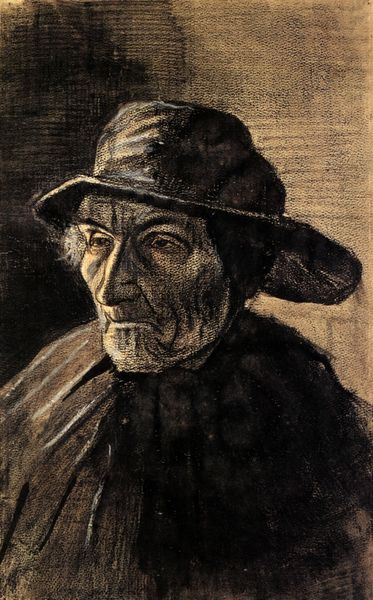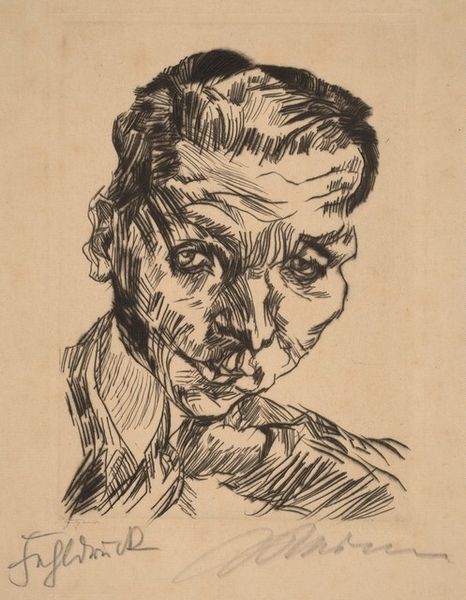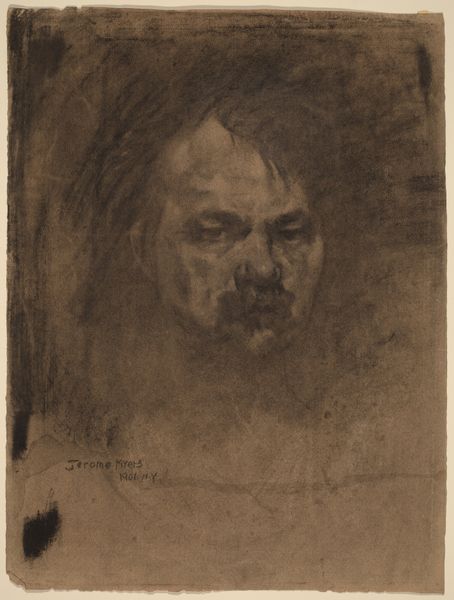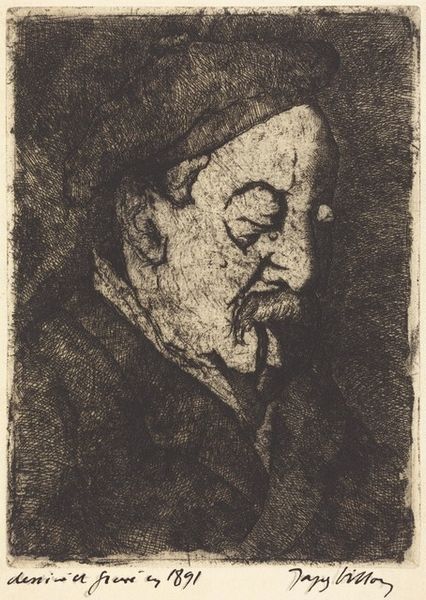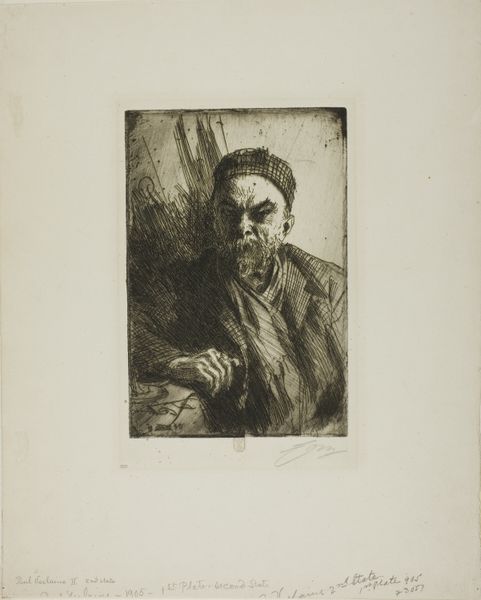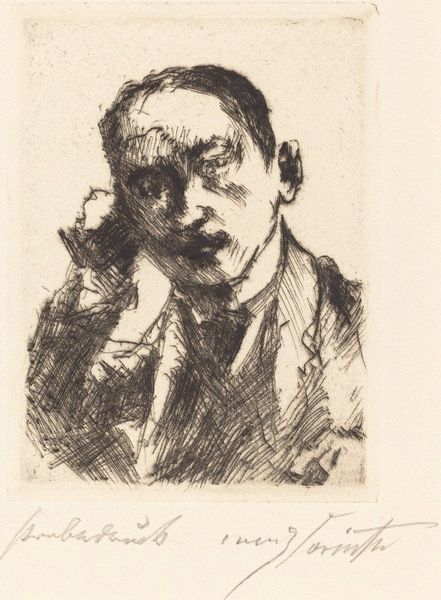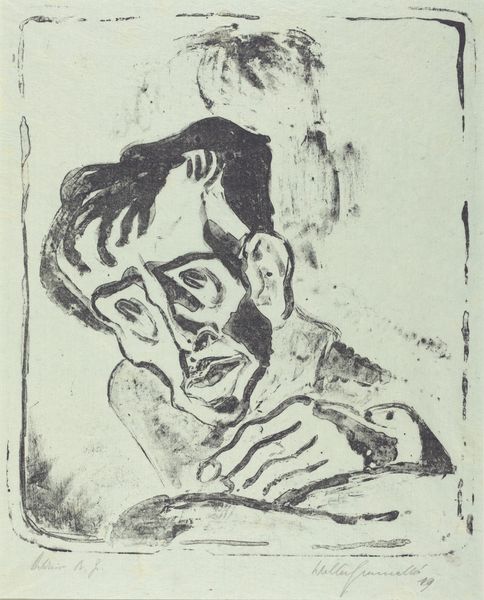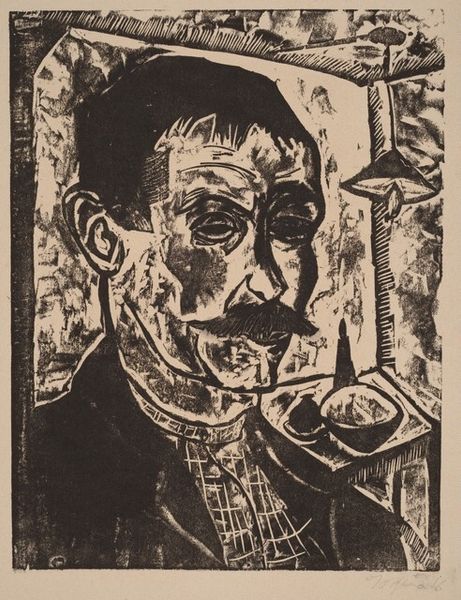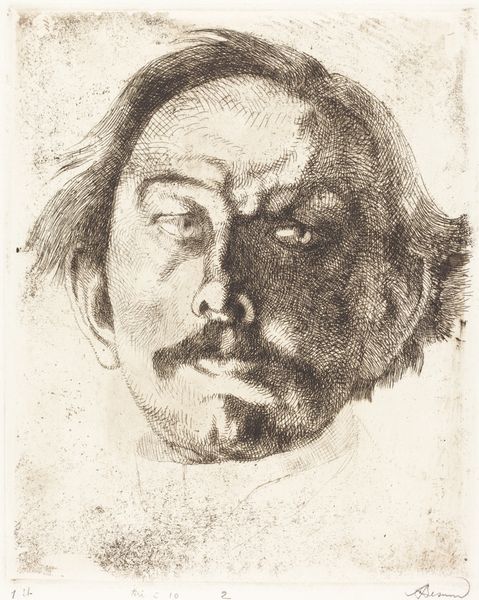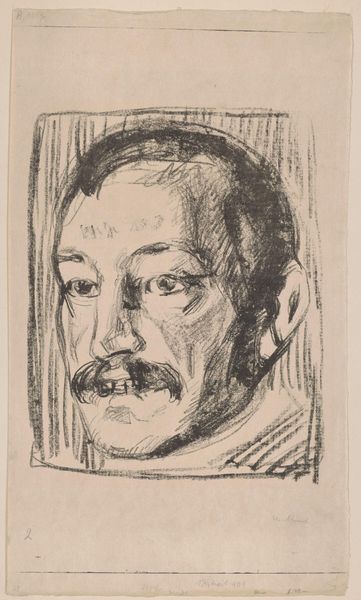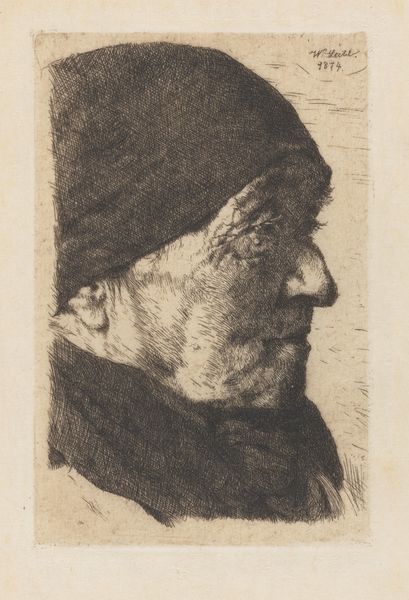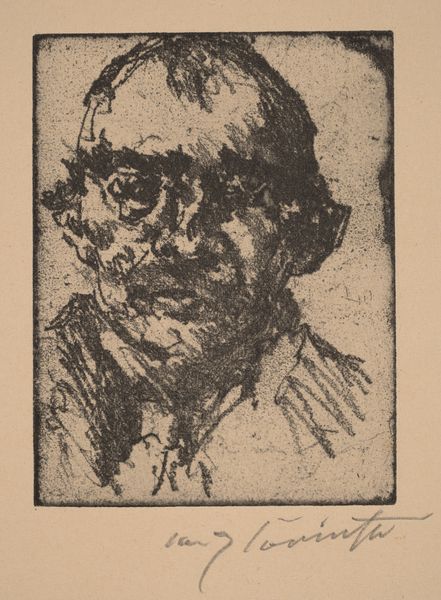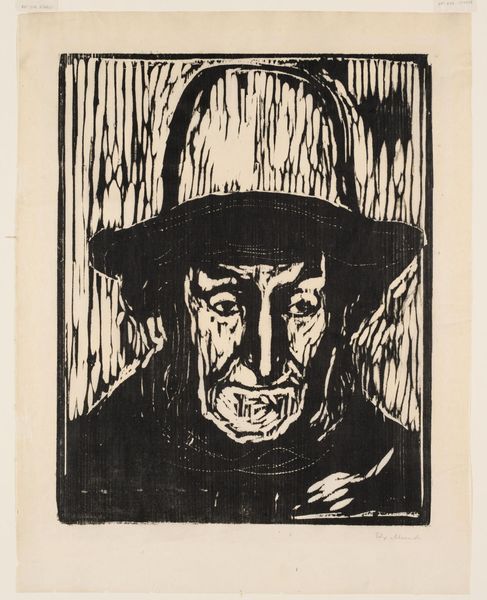
#
head
#
face
#
charcoal drawing
#
charcoal art
#
portrait reference
#
pencil drawing
#
human
#
animal drawing portrait
#
portrait drawing
#
facial portrait
#
forehead
#
portrait art
#
fine art portrait
#
digital portrait
Copyright: Public domain Japan
Editor: We're looking at Koshiro Onchi's "Portrait of Sakutarō Hagiwara," created in 1943. The muted palette and heavy lines create a somber, almost melancholic mood for me. As a portrait, I am curious, how should we consider its social context and the artist's decisions at the time? Curator: That's a perceptive response. Given that it was made in 1943, during the Second World War, the portrait exists within a fraught socio-political landscape in Japan. There was increasing state control over artistic expression. How do you think Onchi navigated those constraints, given his involvement with the *sosaku-hanga* movement and its emphasis on individual expression? Editor: I hadn't considered the artistic climate at the time. Maybe the somber mood is a reflection of that restriction, even in a portrait of another artist? The details of Hagiwara’s face – all the lines – could this intense realism itself be a subtle form of resistance or truth-telling? Curator: Precisely. Realism, in that context, could function as a subtle critique, an honest portrayal of a man marked by the times. And remember, Onchi was part of an intellectual circle. To what extent could Hagiwara himself, as a modern poet, embody resistance through his own art and persona, making him a compelling subject during wartime? Editor: So the choice of subject and the manner of portrayal become intertwined with the politics of representation in a period of censorship. I now appreciate that looking at the social climate, institutions, and political motivations allows for a deeper appreciation. Curator: Absolutely. And understanding those power dynamics allows us to critically assess how even seemingly straightforward portraits can hold complex, politically charged meanings.
Comments
No comments
Be the first to comment and join the conversation on the ultimate creative platform.
